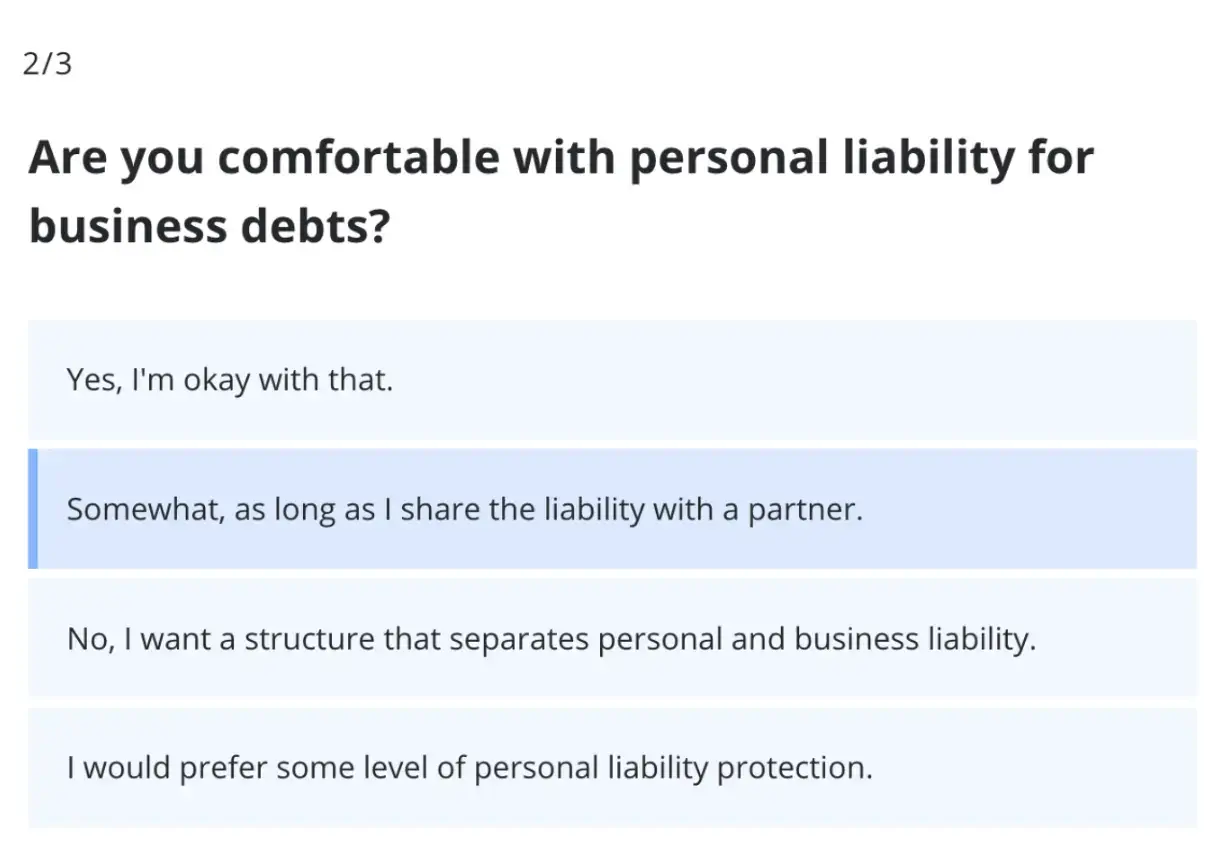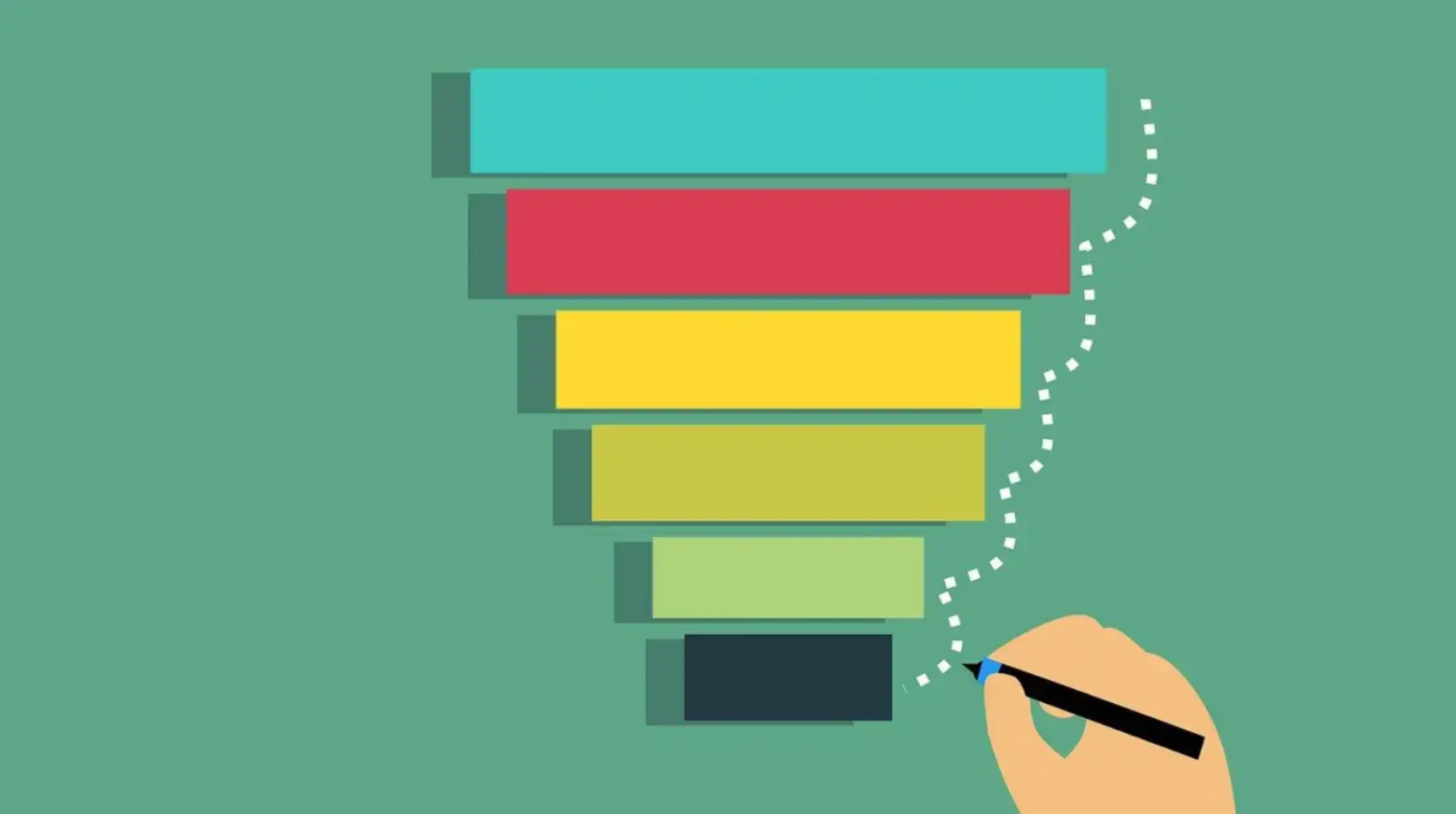There’s a long way from when a person first discovers your company’s offering to the point when they’re ready to purchase.
With lead funnels, you have an overview of the process. So you can easily examine it and make adjustments to turn more leads into customers.
In this article, we’ll look into the three stages of lead generation funnels and the strategies that help you move leads down the funnel.
We’ve also compiled six best practices to follow, no matter the type and size of your business.
Jump to:
- What is the Difference Between Lead Generation and Sales Funnels?
- Three Stages of the Lead Funnel with Examples
- Lead Funnel Strategy Best Practices
- FAQ
What is a Lead Generation Funnel?
A lead generation funnel describes the process of introducing potential customers to your offering and nurturing them until they become qualified leads.
Lead funnels help you direct your marketing efforts, save time and money on campaigns, and increase conversions.
However, a lead funnel is worth nothing without a reliable sales funnel.
What is the Difference Between Lead Generation and Sales Funnels?
Lead generation funnels and sales funnels are two separate processes that require different tactics for success.
Lead funnels, also called marketing lead funnels, are designed for potential customers, i.e., those who’ve never paid for your product or service.
These funnels deal with prospects from the moment they first become aware of an issue (top of the funnel) through the evaluation of possible solutions (middle) until they express interest in your company’s offering (bottom).
Leads who reach the bottom of the lead funnel become marketing-qualified leads (MQL) and enter the top of the sales funnel.
Sales lead funnels work for both new and returning customers. Leads in your sales funnel either come from the marketing funnel or are existing customers.
The lines between marketing and sales lead generation funnels are sometimes blurred.
It’s up to you to decide what approach to use for prospects, depending on their stage in the buyer’s journey.
What is more, your marketing team can be involved in refining your sales funnel. Similarly, your sales representatives can be an invaluable resource for your marketing efforts.
Three Stages of the Lead Funnel with Examples
In this section:
The marketing lead funnel consists of three key stages – awareness, consideration, and conversion. These stages correspond to the top, middle, and bottom of the funnel.
You will find that some companies have four or five phases of their lead generation funnels. Depending on your business’ size and needs, you can divide the prospective customer journey differently.
However, the essence and goal of all lead funnels remain the same.
Read more about customer purchase journey.
-
Awareness
Awareness is the first stage of the lead generation funnel. At the top of the funnel, potential customers first realize they have a challenge and start looking for solutions.
In the awareness stage, your potential customers are at the start of their buyer’s journey.
So, it’s too early to pitch them your solution. Instead, opt for an educational approach – an informative article or a downloadable ebook to collect contact information.
Many customers start their journey on Google with a search query around their issue. That’s why, as a business, one of your main tasks is to increase your visibility in search.
Alternatively, you can use Google ads to appear as a sponsored result. For some businesses, such as retail, influencer marketing works well at the top of the funnel.
-
-
Top of the funnel (TOFU) strategy example
-

Sara is passionate about fashion and wants to launch her online boutique. Her search query “how to start an online boutique” leads her to an article on opening an online boutique.
In it, she discovers that one of the things to look at before launching her online fashion store is the legal requirements and limitations in her area. So Sara’s next query is “how to open a company in Texas.”
Now, let’s say you’re an attorney who provides consultancy for starting a business.
To appear in Sara’s search organically, you’d need to optimize your website with local keywords, create locally relevant articles around common customer questions, and build links to help your content rank higher.
-
Consideration
The second stage of the lead funnel is Consideration.
This is the middle of the funnel, and your potential customer is a lead – they know about your company’s offering and are evaluating it as a solution to their challenge.
At this stage, your main goal is to build trust and nurture your leads. However, manually managing these interactions can be time-consuming and inefficient.
Consider using small business automation tools to streamline communication, personalize offers, and schedule follow-ups, freeing up your team to focus on high-value activities.
On the one hand, you want to educate them about your solution. On the other hand, you must dose your communications – being too persistent can appear spammy and drive your customers away.
-
-
Middle of the funnel (MOFU) strategy example
-
Going back to our earlier example – as an attorney who wants Sara to book your services, you can opt for different MOFU strategies:
- Crafting a series of personalized emails that educate your customers and demonstrate the value you have to offer.
- Holding a workshop for people who want to start their first business – such events establish you as a subject-matter authority.
- Preparing interactive content to engage your audience.
Note that you don’t need to use a single approach. An email campaign can work great with any of the other strategies.
Let’s imagine you decided to create an interactive quiz that helps leads determine the type of entity they need to open.
It includes questions like “Do you want to run a company on your own?” and “Do you want to allow others to invest in your company?”. You can also inquire about their budget.
At the end of the quiz, leads are prompted to provide their name and email address.

With the quiz, you achieve several things:
- You provide value – addressing leads’ pain points and offering direction.
- You capture leads – collecting lead data and storing it in your database.
- You qualify leads – verifying if your services can solve their challenge and are within their budget.
- You segment leads – depending on the service they’re looking for, you can serve them targetted email campaigns.
-
Conversion
The final stage of the lead generation funnels is Conversion. Here, you have prospects – potential customers ready to make a buying decision.
At the bottom of the funnel, you’re trying to resolve customer doubts and drive conversions.
For success, it’s important to nail every step of bottom-funnel optimization, and POWR has a wide range of website plugins created specifically for that.
They include a payment button, order forms, autoresponder emails upon purchase, and more.
Another surefire way to promote conversions is to integrate live chat for lead generation – website visitors who engage with live chat are almost three times more likely to convert than those who don’t. Why is that?
Live chat is a quick and efficient customer service channel that humanizes your brand and builds trust with prospects.
Depending on your business, other conversion-stage strategies include free consultations or demos, customer success stories, product comparisons, and discounts.
However, consider that every lead journey is different. Some prospects reach the bottom of the funnel on their first intent, while others never do.
Having this in mind, you can design personalized lead funnels for optimal success.
-
-
Bottom of the funnel (BOFU) strategy example
-
Sara has reached the bottom of your funnel but still has some concerns about the price of your services. Also, she is considering alternatives such as registering a company on her own or with a different attorney.
To encourage conversion, you want to assure her that she’s making the right decision. Some ways to do this are:
- Offering a free consultation to address final doubts.
- Sharing customer success stories.
- Highlighting how your service/product is superior to alternatives.
- Creating urgency by sharing a limited-time discount.
Lead Funnel Strategy Best Practices
-
Define success metrics at every stage
At every stage of the lead generation funnel, there will be different metrics to track.
At the top of the funnel, you can look at unique website visitors. In the middle, your focus can be email engagement and contacts captured with quizzes.
At the bottom of the funnel, you can look at conversion-to-lead ratio and customer acquisition cost.
Also, monitor customer retention at every stage of the funnel – this can help you identify any leaks and improve the efficiency of your efforts.
-
Map the customer journey
Every action that the customers take, from awareness to conversion, shapes their customer journey.
Tracing what customers do at every stage will help you understand customer behavior and adjust your strategies for success.
Surveys are a powerful way to collect customer feedback and map their journey.
Try to understand where they look for information, what alternatives they considered, how long they evaluated their options, and what helped them make their final decision.
-
Conduct A/B tests
In A/B testing, you share two versions of content with different audiences to see which version performs better. Using this insight, you can optimize your content to guide leads down the funnel.
For example, if you’re running Google Ads, you can test how changing your call-to-action impacts your campaign.
Next, you can run experiments to adjust other aspects of your ads – bids, headlines, visuals, and descriptions. This way, you can understand what works and invest more in it.
Use A/B testing to get the most out of your landing pages, CTAs, email campaigns, and promotional offers.
-
Leverage automation
Automation is your best friend for personalizing your lead funnels at a scale. As every customer journey is different, your approaches need to address that.
One way to leverage automation is in email campaign management. You can segment your audiences so they receive only targeted communications.
Thus, you drive higher engagement while saving the effort to personalize and send out individual emails.
-
Upsell and cross-sell
Upselling and cross-selling are two sales techniques that can help you increase revenue from conversions.
An upsell is when a customer buys a more expensive alternative, while a cross-sell is when they buy a complementary product/service.
Apple optimized its website for upselling and cross-selling across its core products. When buying an iPhone, you get a suggestion to buy more storage than on the base model – this encourages upsells.

Once you’ve set all of the phone’s parameters, you can get a subscription to Apple’s repair services – that’s a cross-sell.
As you can see, combining both techniques is a powerful approach. To leverage it fully, explore how AI can support upselling and cross-selling strategies.
-
Learn to let go of leads
Not all leads will become paying customers, and that’s fine. Define when it’s time to let go and put your efforts elsewhere.
If you’ve planned a free consultation and your lead hasn’t shown up – chances are, they’re not genuinely interested.
Another telling sign is that it’s time to let go when leads are not giving you a timeline for purchase. It shows they lack clarity and commitment if they’re not willing to estimate when they’ll move forward with your offer.
FAQ
1. What is a lead magnet funnel?
A lead magnet funnel is a journey a potential buyer takes, from engaging with one of your lead magnets to becoming a paying customer.
Lead magnets include ebooks, webinars, discount codes, quizzes, or anything that encourages visitors to your website to provide their contact details.
2. Why are lead funnels important?
Lead funnels help you break down the buyer’s journey into different stages. Thus, your sales and marketing teams plan adequate actions for every stage of the funnel. So, you’re using your resources more efficiently.
3. Why do funnels fail?
Your lead generation funnels can fail for a variety of reasons. You need to inspect every stage of the funnel to address any leaks.
Common mistakes include not generating enough traffic to your funnel, poor lead nurturing, too few CTAs, and misalignment between sales and marketing teams.
Get Started with Lead Funnels
Now that you understand the different stages of lead generation funnels, it’s time to map your customer journey and break it down into these stages.
Next, plan what strategies you’d like to use at the top, middle, and bottom of your funnel.
However, don’t forget to look at funnels holistically – all strategies need to work together, bringing your leads closer to purchase.
Author Bio
Hey, it's Mick and I'm the Growth Marketing Manager at POWR. My marketing career spans two decades, primarily in growth marketing in the healthcare space, with stints in broadcast television, advertising and copy editing.
I went to the College of Journalism at the University of Louisiana - Monroe and a storyteller at my core. My wife Elizabeth, son Gavin, and pup Jolene currently call Lafayette, Louisiana home.
Follow me on LinkedIn.




